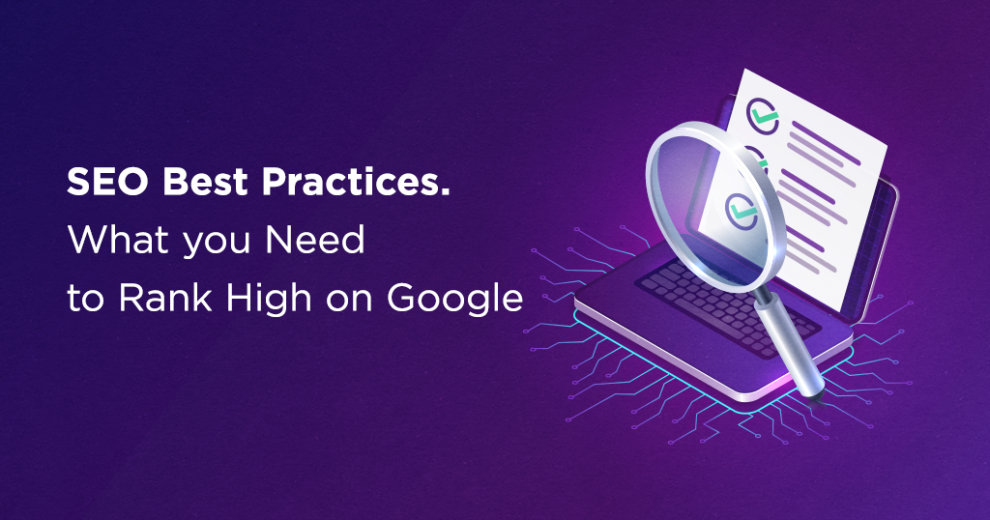Ranking higher on Google is a goal for many website owners and can significantly increase organic traffic. By optimizing your website and content for search engines, you can steadily climb up the search results pages and garner more visibility.
SEO (search engine optimization) is an evolving, ongoing process, but focusing on these core best practices can help dramatically boost your Google ranking and website traffic over time if executed properly.
On-Page SEO Optimization
On-page SEO refers to optimizing elements directly on your website to make it more appealing to search engines like Google. This includes your content, metadata, website speed, mobile optimization, internal linking, and more.
Conduct Thorough Keyword Research
The foundation of any good SEO strategy is identifying high-value keywords and phrases that relate to your business, product, or service. These should be terms and questions your target audience is actively searching for on Google and other search engines.
Leverage free keyword research tools like Google Keyword Planner and paid tools like Ahrefs to discover keyword ideas and analyze their estimated search volume and difficulty to rank for. Focus on 3-5 primary keywords or phrases for each page or blog post.
Incorporate your primary and secondary keywords naturally throughout your content to signal relevancy to search engines. Use them in your titles, headers, URL, meta descriptions, image names, and 1-2 times within your copy.
Create High-Quality, Valuable Content
The quality and value of your content plays a major role in search ranking. Helpful, well-researched, and engaging content can perform better than thin content in SEO.
Ensure all writing on your site is:
- Factually accurate
- Grammatically correct with proper spelling and punctuation
- Relevant, useful, and valuable to readers
- Sufficiently in-depth to fully inform users
- Properly structured with headers, paragraphs, lists, and media for skimmability
- Written in a engaging and compelling style
Different types of content like blog posts, FAQs, guides, case studies, and videos may be optimal depending on your business.
Craft Compelling Title Tags and Meta Descriptions
The title tag and meta description summarize your page content in search listings, acting as advertisements to get clicks.
Titles should be impactful and encourage clicks, while descriptions expand on the topic being covered to provide more context. Keep them under 60 characters and 156 characters, respectively.
Include primary and secondary keywords naturally in both, while accurately depicting what the page offers searchers.
Ensure Your Website is Mobile-Friendly
With a majority of Google searches now happening on mobile devices, having a mobile-friendly website is incredibly important for SEO.
Use Google’s Mobile-Friendly Test to check if your site is fully optimized for all devices and screen sizes. Sites not mobile-friendly can be buried beneath those adapted to mobile UX.
Elements like tap targets, text size contrast, loading speed, layout, and more impact the mobile experience. Ensure these meet Google’s mobile-friendly criteria for SEO and usability.
Optimize Website Speed and Performance
Site speed impacts both user experience and search ranking. Faster sites tend to rank better as visitors spend more time on site.
Test your website’s speed and performance with Google’s PageSpeed Insights. Then optimize elements like images, code, caching, plugins and hardware to help Pages load under 3 seconds.
Decrease bounce rates while providing better experience by improving site speed.
Implement Good Internal Linking Structure
Linking to other relevant pages and content on your own site, known as internal linking, helps search engines crawl your site and gives visitors more options to engage with related content.
Link relevant keywords and phrases within your website text using relevant anchor text. This helps search engines understand context and connections between content.
For example if you mentioned “SEO strategies” within a blog post, consider linking those words to a dedicated guide going more in-depth on the concept.
Off-Page SEO Techniques
While on-page optimization sets the foundation, off-page SEO helps escalate your search visibility by signaling to Google your content is valuable based on references from other sites.
Earn Backlinks from Authority Websites
Backlinks remain one of the strongest ranking signals for SEO. Earning backlinks from other high-authority sites related to your niche helps increase your own domain authority and Google ranking.
Focus on creating genuinely useful, engaging content that sites would naturally want to reference or link out to. Reach out to applicable sites to pitch guest posting opportunities to earn backlinks. Building relationships with other brands and publishers can unlock more networking possibilities long-term as well.
Emphasize quality over quantity when acquiring backlinks. A few links from authority, high-traffic sites can make a bigger impact than lots of low-quality links.
Rank Higher Locally with Local SEO
For businesses attracting customers within their local area, ranking well for geographic and relevant keyword searches is extremely valuable.
Optimize your Google My Business listing with complete accurate business information, photos, videos, posts and offers. This helps you stand out in local pack and map listings for your keywords.
Earn citations and backlinks from other local directories like Yelp to build localization signals. Getting customer reviews also boosts your local authority and search visibility.
Leverage Social Media to Increase Visibility
Promoting your blog posts and other website content across social media platforms helps expand its reach to new audiences.
Share content from your official brand profiles on networks like Facebook, Instagram, Twitter, LinkedIn and Pinterest. Use relevant hashtags, tag other brands, encourage engagement and link back to your site.
Collaborate with influencers within your niche as well to tap into their existing audiences.
Technical Website Optimization
Behind the scenes enhancements to your website’s technical SEO health also contribute to better crawler accessibility, indexing and ranking potential.
Implement Schema Markup for Rich Snippets
Schema markup enables you to annotate content on your pages in ways search engines can better interpret the data.
When implemented properly, eligible content can display as rich snippet results – prominently pulling key information like ratings, author, headlines and visuals directly into search listings.
Use schema.org and its various vocabularies to add JSON-LD, Microdata or other markup to boost chances of rich snippets.
Ensure Proper Robots.txt and XML Sitemap
The robots.txt file tells search engine crawlers which pages or folders to scan or avoid on a website. An XML sitemap then helps guide indexation of those pages easier.
Check your robots.txt allows access to all pages you want indexed. Submit a comprehensive XML sitemap directly to Google Search Console as well for quicker indexing.
Migrate to HTTPS Encrypted Website
Switching your website to HTTPS encryption provides multiple benefits for SEO and UX.
Data sent between browsers and your server becomes more secure, establishing greater user trust. HTTPS also gives a slight ranking boost relative to HTTP websites.
Free resources like Let’s Encrypt allow you obtain SSL certificates to enable HTTPS functionality.
Additional SEO Tips for Sustained Success
Full search optimization requires continuously honing and improving to stay ahead in an ever-changing digital landscape.
Here are some core philosophies to ingrain that enable sustainable growth:
Stay Updated on Google Algorithm Changes
Google updates their ranking algorithm hundreds of times per year, aiming to surface the highest quality results for searchers.
Sign up for Google Search Console notifications to stay updated on changes and refine your SEO to adapt as needed.
Prioritize User Experience Above All
The prime goal of SEO should always be enhancing website visitor satisfaction through your content and site design.
If you create resources that genuinely make users’ lives easier, more enriching or educated, increased traffic and revenue will naturally follow.
Continuously Analyze and Refine SEO
Regularly monitor your SEO through Google Analytics to gauge your progress on objectives like rankings, organic traffic, leads and conversions.
Run experiments by changing one variable at a time, such as optimizing title tags, launching link building campaigns or creating cluster content around new keywords.
Refine underperforming pages and double down on what works to maximize ROI.
The Long Game of SEO
When executed properly as an integrated strategy, these SEO best practices can gradually amplify your brand’s visibility and authority on Google.
However, search optimization requires playing the long game. Consistency, persistence and patience over months and years reap the greatest rewards.
By continually providing searchers value through your content while implementing ongoing technical improvements, you build trust and authority that bubbles up pages higher in rankings.
Use SEO not just to increase website traffic, but to position your brand as a helpful leader within your niche. Solve your audience’s needs better than competitors and infuse your passion into resources. By giving genuine value upfront, increased organic growth will follow.











Add Comment